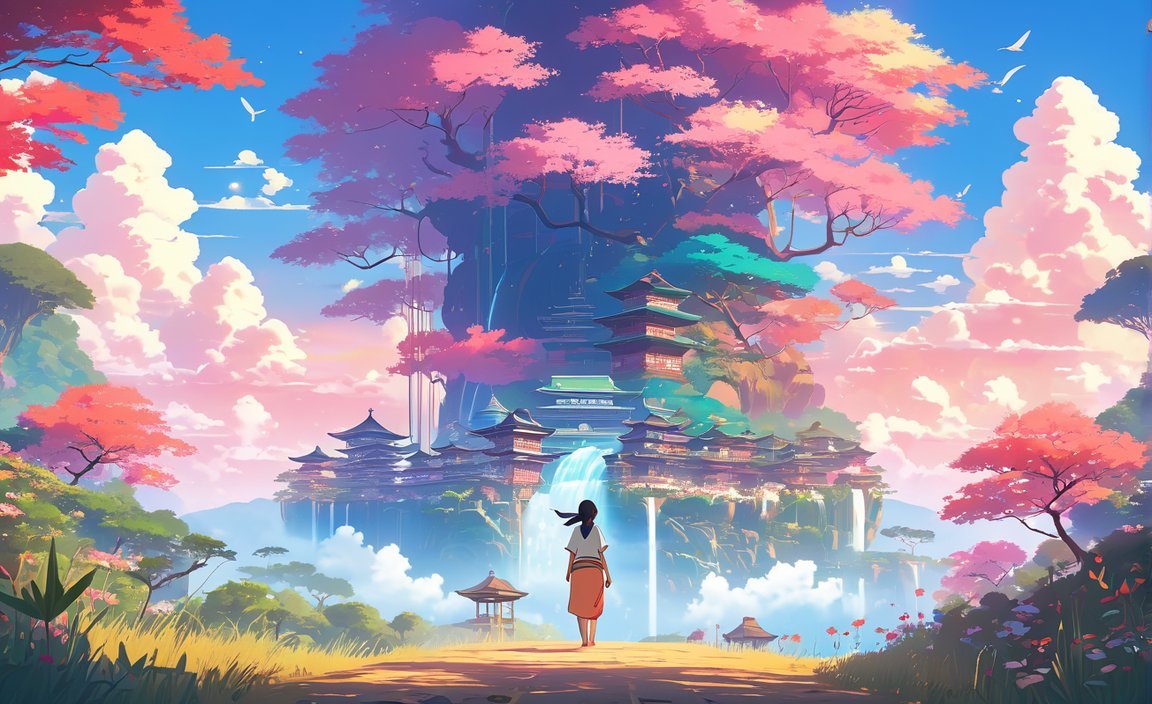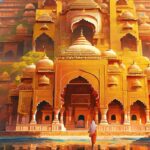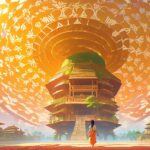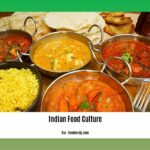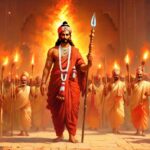Embark on a fascinating journey into the vibrant cultural tapestry of India as we explore an array of fun Indian facts that will leave you captivated. From its rich history to its mesmerizing landmarks, India offers a treasure trove of experiences waiting to be discovered. Join us as we delve into the enchanting world of India’s diverse customs and traditions, unraveling the colorful heritage that brings this remarkable country to life. Get ready to be immersed in a virtual exploration of India’s unique identity and prepare to be amazed by the captivating stories that await.
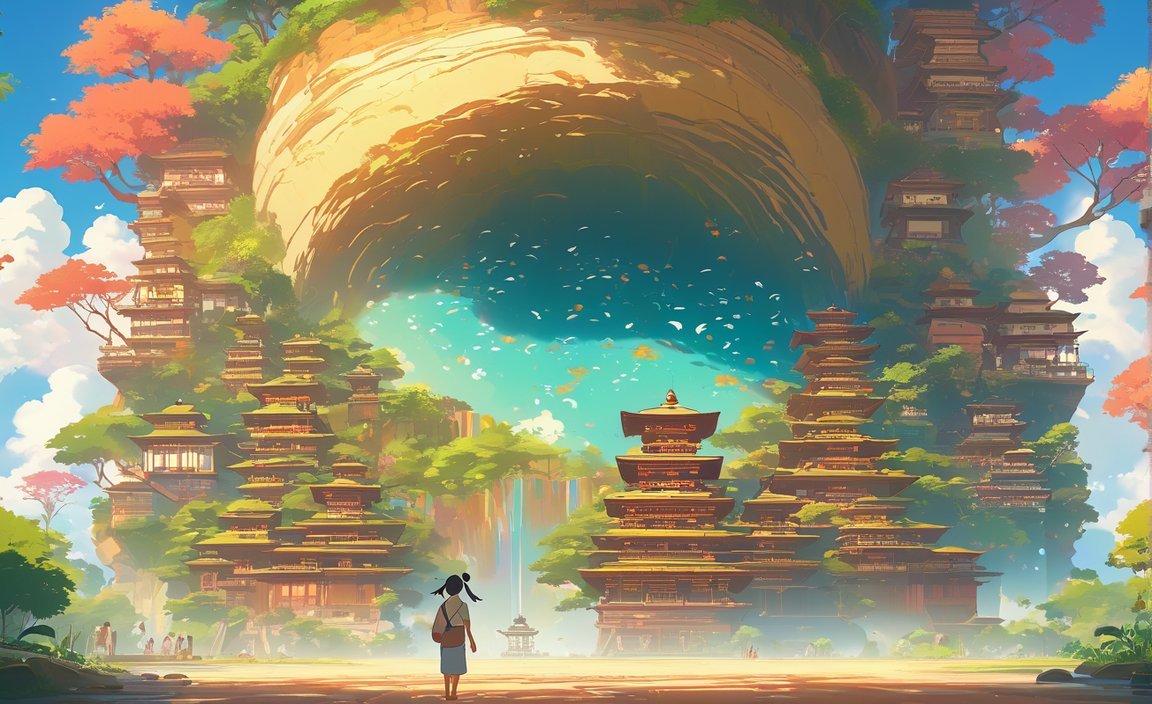
Key Takeaways:
- India holds the distinction of being the largest democracy in the world.
- India is the only country in history that has never attacked another country.
- In Indian culture, a Bichiya is a unique type of wedding ring that is worn on the toe.
- Despite arranged marriages being the most common type of marriage in India, it has the lowest divorce rate.
- India is the seventh largest country in the world, spanning 1.27 million square miles.
- Although India has over a million millionaires, a significant portion of the population lives on less than two dollars a day, with an estimated 35% below the poverty line.
- India is responsible for producing approximately 75% of the world’s spices.
- India was the first country to mine diamonds.
- India is home to over 300,000 mosques and over 2 million Hindu temples.
- Rajasthan is home to the unique Temple of Rats.
- India boasts the highest rail bridge in the world.
- Cherrapunji in India is the wettest inhabited place on earth.
- During World War II, the Taj Mahal was camouflaged as a bamboo stockpile to protect it from potential bombing.
- Cows hold sacred status in Indian culture.
Fun Indian Facts
India, the land of mystique and wonder, is a treasure trove of captivating stories and intriguing facts. Join me on a journey into the vibrant cultural tapestry of this enchanting country as we uncover some fun Indian facts that will leave you amazed and delighted. From its rich history and traditions to its mesmerizing landmarks and mouthwatering cuisine, India is a land of endless discoveries.
India: A Country of Firsts
India’s glorious history is filled with remarkable achievements and innovations. Did you know that India is the first country to mine diamonds? Yes, centuries ago, Indian diamond miners discovered these precious gems, which have since become a symbol of love and luxury around the world. India is also home to the largest democracy on the planet, where the voice of its diverse population is heard through the power of voting.
Land of Contrasts
India is a land of stark contrasts, where ancient customs blend harmoniously with modern life. Despite being the seventh largest country in the world, spanning a massive 1.27 million square miles, India is also known for its high population density. Its bustling cities are a testament to this, teeming with life and carrying the legacy of centuries of history.
In India, cows hold a sacred status and are revered as gentle creatures. They roam freely on the streets, a peaceful presence amidst the chaos of everyday life. This cultural belief has led to the creation of a unique symbiotic relationship between humans and cows, with cows being protected and cared for by the community.
Marvels and Wonders
India is home to some of the most awe-inspiring landmarks and natural wonders in the world. Can you imagine the Taj Mahal, one of the Seven Wonders of the World, being camouflaged as a bamboo stockpile during World War II to protect it from potential bombing? This remarkable act demonstrates the love and dedication Indians have for their cultural heritage.
The state of Rajasthan houses the Temple of Rats, where thousands of rats scurry around freely, considered sacred by the locals. It’s a truly unique sight that showcases the diverse beliefs and practices within Indian religious traditions. And let’s not forget about Cherrapunji, the wettest inhabited place on earth, where rain falls in abundance, nourishing the lush landscape and creating a picturesque setting like no other.
Spices and Flavors
Prepare your taste buds for a culinary adventure like no other, as India is responsible for producing approximately 75% of the world’s spices. The intoxicating aroma of Indian spices permeates the air, tantalizing the senses and adding depth to each dish. Each region of India has its own distinct flavors and specialties, making Indian cuisine a tapestry of diverse tastes and textures.
The Heart of Unity
Despite its many diversities, India finds its strength in unity. Its rich tapestry of cultures, languages, and traditions is harmoniously woven together, creating a vibrant and inclusive society. The country is home to over 300,000 mosques and over 2 million Hindu temples, showcasing the importance of religious pluralism and coexistence in Indian society.
In Summary
India, with its rich heritage and astounding cultural diversity, has countless stories to tell. These fun Indian facts barely scratch the surface of the wonders that await every traveler who ventures into this enchanting country. From its firsts and landmarks to its traditions and flavors, India has a way of captivating the hearts and minds of those who seek to explore its vibrant tapestry. So come, immerse yourself in the magic of India and embark on a journey that will leave an indelible mark on your soul.
Here are some fun facts about different countries, click on the links to learn more:
- Albania fun facts: Did you know that Albania is home to some of the most beautiful beaches in Europe? Discover more interesting facts about Albania!
- Fun facts for India: India is a land of rich culture and history. Click here to explore some fascinating facts about India.
- Fun facts on India: From the majestic Taj Mahal to spicy street food, India is full of surprises. Find out interesting facts on India here!
- Cool facts about India: Dive into the cool and extraordinary facts about India. Click to learn more!
- Interesting fact about India: India is a country of wonders and diversity. Click here for an interesting fact about India!
- UK fun facts: Explore the United Kingdom and its fascinating culture. Check out some fun facts about the UK!
Start your journey of discovery now!
World’s largest democracy: India’s democratic system is a marvel in its scale and complexity.
India’s democratic system is truly a remarkable feat, considering its vast population and diverse cultural landscape. As the world’s largest democracy, India’s political framework not only showcases the nation’s commitment to upholding the rights and liberties of its citizens but also reflects the country’s vibrant tapestry of traditions and beliefs.
The Birth of India’s Democratic System
India’s journey towards democracy began with its independence from British colonial rule in 1947. The framers of India’s constitution, led by Dr. B.R. Ambedkar, worked diligently to create a system that would ensure equality, justice, and the representation of all citizens regardless of their caste, religion, or gender. The resulting constitution, adopted on January 26, 1950, established India as a sovereign democratic republic.
India’s democratic system is rooted in the principle of universal adult suffrage, where every citizen above the age of 18 has the right to vote. This inclusive approach allows for a diverse electorate that represents the multi-faceted facets of Indian society.
The Complexity of India’s Democracy
India’s democratic system operates at multiple levels, with power shared between the central government, state governments, and local bodies. This decentralized structure ensures that governance reaches every corner of the country, from bustling metropolises to remote rural areas.
The Parliament of India, consisting of the President, the Rajya Sabha (Council of States), and the Lok Sabha (House of the People), serves as the primary legislative body. The Parliament formulates laws and policies that shape the nation’s direction.
India’s democratic system is further reinforced by the presence of an independent judiciary, responsible for upholding the rule of law and safeguarding the rights and freedoms of citizens. This separation of powers ensures a system of checks and balances, preventing any single branch from becoming too dominant.
Challenges and Evolution
While India’s democratic system is undoubtedly impressive, it faces its fair share of challenges and criticisms. In recent years, there have been concerns over the erosion of democratic values and the shrinking space for dissent.
Critics argue that the current government’s policies have threatened India’s free press, marginalized certain communities, and compromised the independence of key institutions. These challenges highlight the need for constant vigilance to ensure the preservation of democratic principles.
Key Takeaways:
- India’s democratic system is the world’s largest, reflecting its commitment to upholding the rights and liberties of its citizens.
- India’s constitution, adopted in 1950, established the nation as a sovereign democratic republic.
- India’s democracy operates at multiple levels, with power shared between the central government, state governments, and local bodies.
- The Parliament of India, consisting of the President, Rajya Sabha, and Lok Sabha, serves as the primary legislative body.
- An independent judiciary, separate from the legislature and executive, upholds the rule of law and safeguards citizens’ rights.
- Challenges to India’s democracy include concerns over the erosion of democratic values and the shrinking space for dissent.
Sources:
1. Vox – India’s Eroding Democracy Threatens Its Foreign Policy
2. The New York Times – Opinion | India, the World’s Biggest Democracy, Is …
Spiritual Heritage: India’s Birthplace of Four Major Religions
India boasts a rich spiritual heritage, being the birthplace of four major religions: Hinduism, Buddhism, Jainism, and Sikhism. These religions have not only shaped the lives and beliefs of millions of people in India but have also left a profound impact on the global spiritual landscape. In this article, we will delve into the fascinating intertwining of spirituality and culture in India, exploring the origins, principles, and unique aspects of these four major religions.
Hinduism: Ancient Beliefs and Diverse Traditions
Hinduism, considered the oldest religion in the world, originated in the Indus Valley Civilization and has evolved over thousands of years. It encompasses a diverse range of beliefs, rituals, and practices, reflecting the vast cultural mosaic of India. The essence of Hinduism lies in its belief in a supreme divine power that manifests in multiple forms, known as deities. From the exuberant celebrations of Diwali and Holi to the tranquil meditation practices of yoga and the sacred pilgrimage sites like Varanasi, Hinduism is deeply woven into India’s cultural fabric.
(Source: Wikipedia)
Buddhism: Enlightenment and Inner Peace
Buddhism emerged as a distinct religious tradition in ancient India, founded by Siddhartha Gautama, also known as the Buddha. Buddhism emphasizes the pursuit of enlightenment and the alleviation of suffering through a noble eightfold path consisting of moral conduct, mindfulness, and meditation. India’s spiritual landscape is adorned with numerous Buddhist sites, such as the ancient monastic complex of Nalanda, the iconic Sanchi Stupa, and the peaceful town of Bodh Gaya, where the Buddha is said to have attained enlightenment.
(Source: Wikipedia)
Jainism: Non-Violence and Spiritual Liberation
Jainism, an ancient Indian religion, centers around the principles of non-violence (ahimsa), truth (satya), and spiritual liberation (moksha). Jains follow a strict vegetarian diet and practice non-violence towards all living beings. The exquisite Jain temples across India, such as the intricately carved Dilwara Temples in Mount Abu and the soaring Gomateshwara Statue in Shravanabelagola, stand as testaments to the devotion and architectural brilliance of the Jain community.
(Source: Wikipedia)
Sikhism: Equality and Service to Humanity
Sikhism, founded in the 15th century by Guru Nanak Dev, is a monotheistic religion that emphasizes the importance of equality, truthful living, and service to humanity. The Golden Temple, located in Amritsar, is the holiest shrine for Sikhs and serves as a symbol of the harmonious coexistence of various religions in India. The distinctive Sikh turbans and the melodious Gurbani hymns reverberating through the Gurudwaras create an atmosphere of spirituality and inclusiveness.
(Source: Wikipedia)
Key Takeaways:
- India is the birthplace of four major religions: Hinduism, Buddhism, Jainism, and Sikhism.
- Hinduism, the oldest religion in the world, encompasses diverse beliefs and practices.
- Buddhism emphasizes enlightenment and inner peace.
- Jainism promotes non-violence and spiritual liberation.
- Sikhism focuses on equality and service to humanity.
India’s spiritual heritage, with its colorful tapestry of traditions and beliefs, has captivated the hearts and minds of people worldwide. As the birthplace of Hinduism, Buddhism, Jainism, and Sikhism, India offers a profound glimpse into the interplay of spirituality and culture. Join us on a journey through this ancient land, where every corner reveals a new facet of these magnificent religious traditions.
Iconic Landmarks: India’s Architectural Marvels
India is a country that bursts with architectural marvels, showcasing its rich cultural heritage and remarkable craftsmanship. From the iconic Taj Mahal to ancient wonders like the Ajanta and Ellora caves, these landmarks are a testament to India’s history and artistic brilliance. Let’s embark on a journey to explore the captivating beauty of these iconic Indian structures.
Taj Mahal: A Symbol of Love and Commitment
Let’s start our exploration with the magnificent Taj Mahal, located in Agra, Uttar Pradesh. This iconic mausoleum, built by Emperor Shah Jahan as a tribute to his wife Mumtaz, stands as a symbol of love and commitment. As one of the New Seven Wonders of the World and a UNESCO World Heritage site, the Taj Mahal captivates visitors with its stunning white marble façade, intricate carvings, and meticulously designed gardens. It’s an architectural masterpiece that has left people awe-inspired for centuries.
Citation: [^1^]
Ajanta and Ellora Caves: Ancient Rock-Cut Wonders
Moving on to the ancient wonders, we have the mesmerizing Ajanta and Ellora Caves located in Aurangabad, Maharashtra. These UNESCO World Heritage sites showcase exceptional Buddhist religious art and fascinating Jataka Tales. The caves, carved out of solid rocks, boast intricate sculptures and vibrant paintings that offer a glimpse into India’s ancient past. Exploring these caves is like stepping back in time and witnessing the artistic brilliance of early Indian civilizations.
Citation: [^3^]
Now let’s take a moment to reflect on the key takeaways from our journey through India’s architectural marvels.
Key Takeaways:
- India is home to numerous stunning architectural marvels that represent its rich cultural diversity and craftsmanship.
- The Taj Mahal in Agra stands as an enduring symbol of love and commitment, captivating visitors with its stunning beauty.
- The Ajanta and Ellora Caves in Aurangabad showcase exceptional Buddhist religious art and offer a glimpse into India’s ancient past.
With each landmark we visit, we uncover new layers of India’s cultural tapestry and witness the incredible artistry and craftsmanship that has shaped the country’s architectural legacy. Join us in this exploration of India’s iconic landmarks and embrace the enchanting heritage they hold.
Sources:
[^1^]: Times of India
[^3^]: Indian Holiday
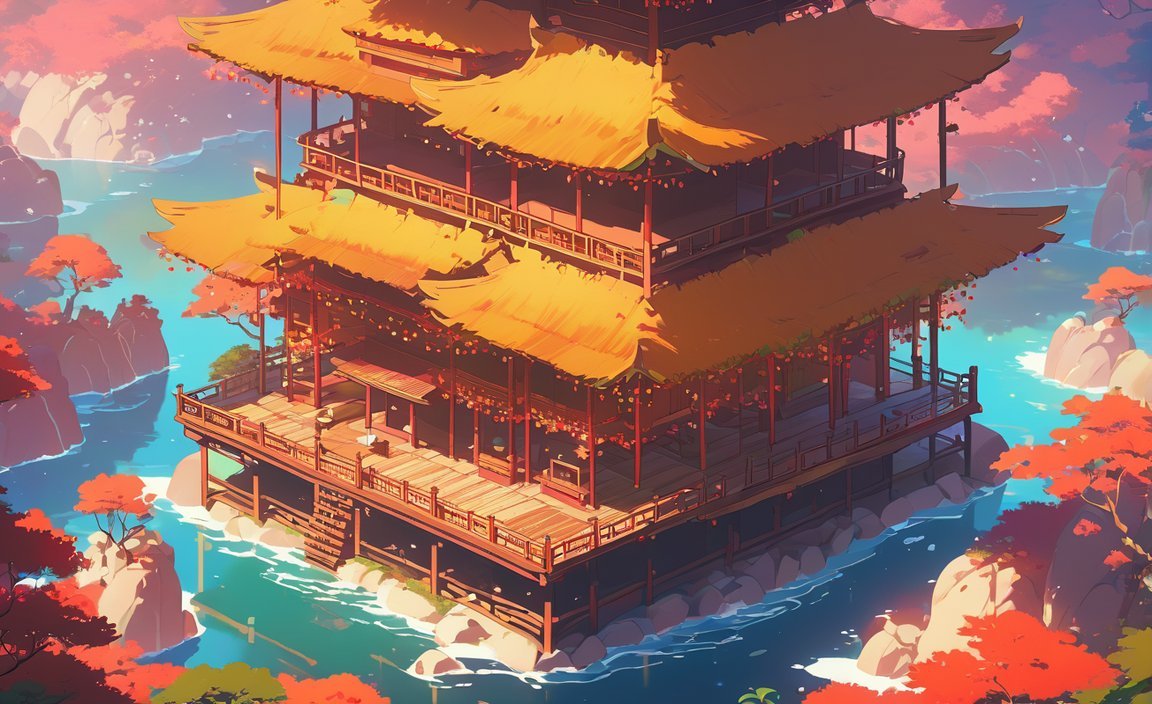
FAQ
Q1: What is the significance of the Bichiya in Indian culture?
A1: In Indian culture, a Bichiya is a unique type of wedding ring that is worn on the toe. It holds cultural and traditional significance as a symbol of marriage and commitment.
Q2: What is the divorce rate like in India?
A2: Despite arranged marriages being the most common type of marriage in India, it has the lowest divorce rate. This showcases the cultural value placed on commitment and long-lasting relationships.
Q3: What is the size of India compared to other countries?
A3: India is the seventh largest country in the world, spanning 1.27 million square miles. Its vast size allows for a diverse range of landscapes, cultures, and traditions.
Q4: What is the poverty rate in India?
A4: Although India has over a million millionaires, a significant portion of the population lives on less than two dollars a day, with an estimated 35% below the poverty line. This stark contrast highlights the economic inequality in the country.
Q5: What is the significance of cows in Indian culture?
A5: Cows hold a sacred status in Indian culture. They are considered to be holy animals and are revered for their gentle nature and contribution to agriculture and food production.
- Star Ring Trends: Etsy vs Amazon - March 28, 2025
- Boost Pollinator Habitats: Baby Blue Eyes Sustainable Farming Guide - March 28, 2025
- Protect Big Black Bears: Effective Conservation Strategies - March 28, 2025
